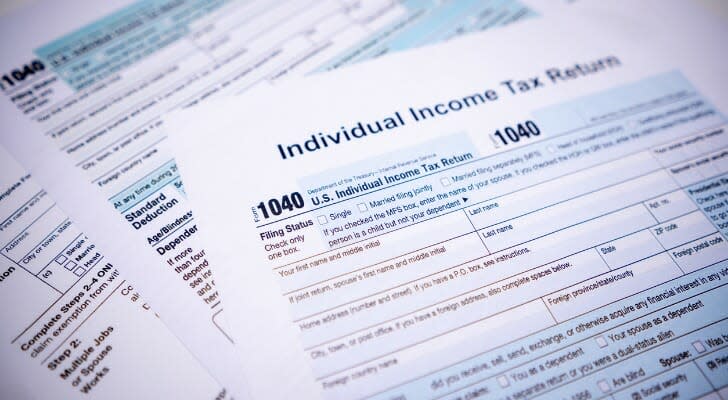Catch-up contributions are about to change. Starting in 2024, some workers who make catch-up contributions to employer-sponsored retirement plans, like a 401(k), will have to put this money in a Roth account. This means that they cannot deduct these contributions from their income taxes, but will be able to withdraw the account’s gains later in life tax free. This change will apply to anyone who earns $145,000 or more. Here’s what’s going on.
Consider working with a financial advisor as you evaluate your options for building a nest egg.
What Are Catch-Up Contributions?
Every tax-advantaged retirement account has a maximum contribution limit. This is the cap on how much money you can put into the account each year without paying taxes. For example, in 2023, an individual can only contribute up to $22,500 to his or her 401(k) account. For IRA account, you can contribute up to $6,500.
In order to incentivize retirement savings, the IRS allows “catch-up contributions” for those who are age 50 or older. So if you’re over the age of 50, you can contribute an extra $7,500 to a 401(k) or an additional $1,000 to an IRA in 2023. This is on top of the aforementioned contribution cap.
Historically, the rules around catch-up contributions have been based on the underlying account. If you make catch-up contributions to a 401(k), for example, you receive the standard tax deduction of that account. If you put catch-up contributions in a Roth IRA, you pay taxes up front and pay no taxes on withdrawals.
For higher-earning households, however, that’s about to change.
Section 603 Changes How Catch-Up Contributions Work
In 2022, Congress passed the law known as SECURE 2.0, a sweeping collection of changes to retirement in the United States. Although it had a few signature elements, most notably the transition of 401(k) programs from opt-in to opt-out, most of the law makes detailed changes to a very large number of programs.
But detailed changes aren’t the same as small ones, a fact that has become quite clear with the now-infamous Section 603.
In Section 603 of the SECURE 2.0 Act, Congress changed how catch-up contributions work for higher-earning households. Specifically, with employer-sponsored plans such as a 401(k), if you earned more than $145,000 in the previous tax year you must make all catch-up contributions on a Roth basis. This means that you cannot deduct the income they use for catch-up contributions, but will not have to pay taxes on the money or its earnings when you withdraw it later in life.
This rule does not affect IRA plans.
Contribution limits will not change, since individuals will still contribute this money to an employer-sponsored plan. Instead, employers who allow catch-up contributions will need to begin offering Roth plans in addition to their standard pretax retirement plans. This has led to some pushback, with retirement industry groups citing the time and costs involved with establishing new Roth plans.
These changes are set to take effect beginning Jan. 1, 2024.
What Does This Mean for Taxes?
The first thing to note is that Section 603 does not phase in. Individuals who earn $144,999 or less are exempt. They may fully deduct the income that they contribute to an employer-sponsored retirement account, including any catch-up contributions.
This section fully applies to individuals who earn $145,000 or more. They may fully deduct the income that they contribute to a 401(k) account up to the standard annual limit. They cannot deduct any income that they use for catch-up contributions and must pay taxes on that money. They must put this money into a Roth account, which will return its growth untaxed.
Specific tax impact will depend entirely on an individual’s income. Take, for example, someone who earns $150,000 and makes the maximum catch-up contributions. Without addressing other deductions or other tax implications, the impact on their income tax would look like this:
Currently they would be able to deduct this contribution, allowing them the following deduction:
-
Income – $150,000
-
Top Tax Bracket: 24% for income between $89,076 – $150,000
-
Tax Deduction – $7,500
-
Remaining Taxable Income – $142,500
-
Tax Deduction – 24% x $7,500 = $1,800
-
Final Income Taxes – $24,928
Income tax deductions always come from the highest income bracket first. In this case, the individual’s top tax bracket is 24%. They can deduct $7,500 from the money currently taxed at 24%, giving them a deduction worth $1,800 in total tax savings.
Starting in 2024, this same person will not be able to deduct catch-up contributions. Assuming the same catch-up contribution limit (which will increase each year), this person’s new taxes will look like this:
-
Income – $150,000
-
Tax Deduction – $0
-
Remaining Taxable Income – $150,000
-
Final Income Taxes – $26,728
The individual has functionally $1,800 less with which to invest. However, while it will make retirement saving more expensive up front, it will also incentivize employers to establish more Roth options in their retirement plans. These plans have much larger tax advantages in the long run, since ultimately the investor pays no taxes on the larger amount withdrawn in retirement, rather than the smaller amount invested up front.
For individuals looking to avoid this tax issue, a good option would be to open an IRA. These are pretax accounts, and you can have both a 401(k) (or equivalent) and an IRA at the same time. While IRAs have much lower maximum contribution limits, you can generally invest almost as much in an IRA as you could invest through catch-up contributions, making this a good equivalent investment strategy.
This Issue Has Been Mistaken for a Mistake
The new tax cap is not a mistake. The original text of SECURE 2.0 contained a drafting error related to catch-up contributions. In brief, among its changes, Section 603 deleted a small paragraph in the Internal Revenue Code. The deleted section of the Internal Revenue Code (IRS) establishes that, if the IRS allows a plan participant to make catch-up contributions to a 401(k) or other employer-sponsored plan, those contributions qualify for pretax status.
The idea was to prevent contradictory language in the tax code. But in deleting this section, instead of specifying that it only applies to some taxpayers, Congress potentially made pretax catch-up contributions illegal for everyone. Members of Congress have since stated that this was a drafting error and they intend to correct it, although at time of writing it has not been fixed.
Some reporting has conflated this error with the new tax cap, suggesting that Congress might roll back the $145,000 cutoff. This is inaccurate. The new catch-up contributions cap was intentional.
Bottom Line
If you earn more than $145,000 per year, starting in 2024 you will not be able to deduct catch-up contributions that you make to an employer-sponsored plan. Instead, all such contributions will have to go into a Roth plan, on which you will pay taxes up front but not when you withdraw the gains.
Retirement Planning Tips
-
A financial advisor can help you build a comprehensive retirement plan, including how to handle catch-up contribution opportunities. Finding a financial advisor doesn’t have to be hard. SmartAsset’s free tool matches you with up to three vetted financial advisors who serve your area, and you can have a free introductory call with your advisor matches to decide which one you feel is right for you. If you’re ready to find an advisor who can help you achieve your financial goals, get started now.
-
Catch-up contributions can be a great way to add extra liquidity to your retirement account, particularly given that most people will work and save for almost 20 more years. So it’s worth making the absolute most of them.
Photo credit: ©iStock.com/designer491, ©iStock.com/Paolo Cordoni, ©iStock.com/zamrznutitonovi
The post Earn Over $145k? You May Have to Pay Taxes on Your Catch-Up Contributions appeared first on SmartAsset Blog.



